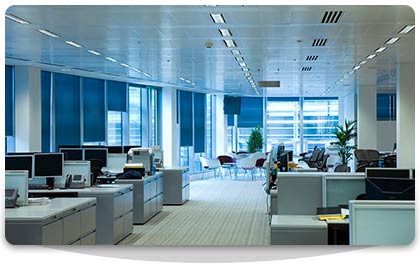 Most people spend much of their time indoors. The air that we breathe in our homes, in schools, and in offices can put us at risk for health problems. Some pollutants can be chemicals, gases, and living organisms like mold and pests.
Most people spend much of their time indoors. The air that we breathe in our homes, in schools, and in offices can put us at risk for health problems. Some pollutants can be chemicals, gases, and living organisms like mold and pests.
Several sources of air pollution are in homes, schools, and offices. Some pollutants cause health problems such as sore eyes, burning in the nose and throat, headaches, or fatigue. Other pollutants cause or worsen allergies, respiratory illnesses (such as asthma), heart disease, cancer, and other serious long-term conditions. Sometimes individual pollutants at high concentrations, such as carbon monoxide, cause death.
SOURCE: Care for Your Air: A Guide to Indoor Air Quality - Understand indoor air in homes, schools, and offices. (EPA 404/F-08/008, http://www.epa.gov/iaq/pubs/careforyourair.html)
 In "An Office Building Occupant's Guide to Indoor Air Quality" the EPA states that
In "An Office Building Occupant's Guide to Indoor Air Quality" the EPA states that
"Maintaining good Indoor Air Quality requires attention to the building's heating, ventilation, and air conditioning (HVAC) system; the design and layout of the space; and pollutant source management. HVAC systems include all of the equipment used to ventilate, heat, and cool the building; to move the air around the building (ductwork); and to filter and clean the air. These systems can have a significant impact on how pollutants are distributed and removed. HVAC systems can even act as sources of pollutants in some cases, such as when ventilation air filters become contaminated with dirt and/or moisture and when microbial growth results from stagnant water in drip pans or from uncontrolled moisture inside of air ducts."
The same HVAC system that distributes conditioned air throughout a building can also distribute dust and other pollutants including biological contaminants. Dirt or dust accumulation on any components of an air handling system such as cooling coils, ducts, plenums, and equipment housing can lead to the contamination of the air supply. The presence of dust in the ductwork does not necessarily mean there is a micro-biological problem, small amounts of dust on ductwork surfaces is actually normal and should be inspected if there is a concern. Special attention should be given to ducts contaminated by water damage, biological growth, debris in ducts that restrict airflow, or dust discharging from supply diffusers. Problems with excessive dust can be a result of poor filtration, or filtration efficiency these components should often be inspected. Regular HVAC maintenance, and good housekeeping practices can contribute to a healthy indoor environment
SOURCE: An Office Building Occupants Guide to Indoor Air Quality (EPA-402-K-97-003, http://www.epa.gov/iaq/pubs/occupgd.html)
Better Air Professionals understand that not all indoor air pollutants come from its mechanical systems, but these mechanical systems can contribute to poor indoor air quality. Better Air Professionals will analyze HVAC Systems, determine if these systems need to be decontaminated, and provide written estimates of work that may need to be performed.
BENEFITS OF USING BETTER AIR
BETTER AIR adheres to all HVAC cleaning requirements and Code of Ethics provided by the National Air Duct Cleaning Association (NADCA).
BETTER AIR Professionals will not just clean the ducts. Better Air will restore all mechanical components to ensure your system is running at peak efficiency and cleanliness.
BETTER AIR Professionals use Hepa Filters on all collections units during HVAC Decontamination to protect the building during the cleaning process.
BETTER AIR Professionals will provide and document before and after pictures of all work performed.
LICENSED, BONDED, AND INSURED
ALL JOBS ARE WORKMANSHIP GUARANTEED!
Call 1-888-421-2055 Today to Schedule!